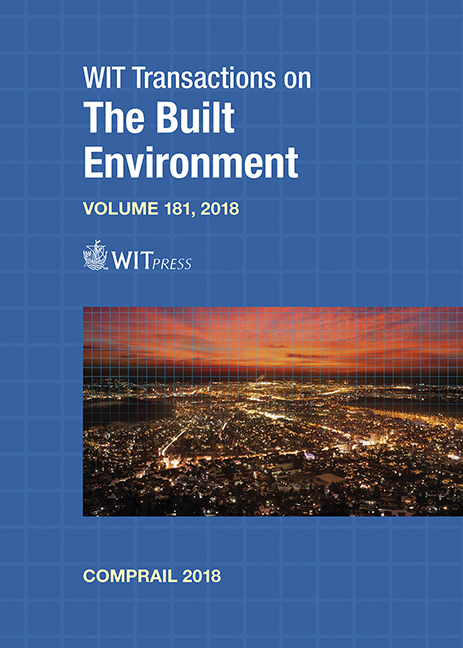ULTRA-HIGH FREQUENCY TRAIN OPERATION USING THE SOFT COUPLING TECHNIQUE: HEADWAY EVALUATIONS
Price
Free (open access)
Transaction
Volume
181
Pages
9
Page Range
133 - 141
Published
2018
Size
591 kb
Paper DOI
10.2495/CR180121
Copyright
WIT Press
Author(s)
FUMITAKA KAKUHAMA, RYO TAKAGI
Abstract
The level of congestion observed in urban railways during peak hours is unacceptably high, and there is a strong need for quick improvement. One possible method to alleviate congestion without large-scale investment in railway infrastructure (e.g. increasing tracks) is the realisation of “soft coupling”. This is a concept in which the space between two moving trains is controlled to an extremely short distance so that these two trains look as if they were mechanically coupled. The purpose of this study is to evaluate the limits of the transport capacity of urban railways when soft coupling is applied. Although it is expected that ultra-high frequency train operation will be possible by using this technique, there is a danger that these two trains would collide with each other when doing so. To avoid the problem, deceleration parameters of trains must be set properly. In this paper, the authors first search for the appropriate set of deceleration parameters by means of simplified braking performance calculations. Following this, the authors evaluate the possibility of increasing train frequency by using this technique. Especially, the authors reveal that it is possible to reduce headways between two trains that are running in the same direction and calling at the same platform in a station even further by using soft coupling, when compared with the cases using either pure moving block (PMB), relative moving block (RMB), a new variant of continuous ATP used in Japan (called Digital ATC) and another conventional variant of continuous ATP used in Japan (called ATS). By comparing all five types of signalling systems, it can be concluded that soft coupling can greatly contribute to shortening the headways between trains.
Keywords
soft coupling, ultra-high frequency train operation, moving block, signalling system, the headways between the leading and the following trains





